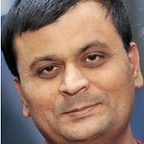Project Management, Program Management, and Portfolio Management
In mature project management organizations, project management exists in a broader context governed by program management and portfolio management
Project Team takes input from operations for new projects. Project and operations are two separate organizations with completely different area of work and knowledge. To manage any project we need a Project Manager. The PMP certification is all about it, the competencies of a project manager can be grouped in 3 categories knowledge, performance and personal.
Knowledge can be gained by reading books, participating in conferences and seminars related to project management. The knowledge gained is valuable only when it is applied in practical world. A good amount of time of a project manager is spent in resource management. Soft skills and strong communication skills are key characteristics required to manage project team and other stakeholders. Skills like leadership, conflict management, effective listening, and negotiations plays extremely important role for a project manager to perform well in the area of project management.
Portfolio Management
A portfolio refers to a collection of projects or programs and other work that are grouped together to facilitate effective management of that work to meet strategic business objectives. The projects or programs of the portfolio may not necessarily be interdependent or directly related. For example, an infrastructure firm that has the strategic objective of “maximizing the return on its investments” may put together a portfolio that includes a mix of projects in oil and gas, power, water, roads, rail, and airports. From this mix, the firm may choose to manage related projects as one program. All of the power projects may be grouped together as a power program. Similarly, all of the water projects may be grouped together as a water program.
Program Management
A program is defined as a group of related projects managed in a coordinated way to obtain benefits and control not available from managing them individually. Programs may include elements of related work outside the scope of the discrete projects in the program. A project may or may not be part of a program but a program will always have projects.
Program management focuses on the project interdependencies and helps to determine the optimal approach for managing them. Actions related to these interdependencies may include:
- Resolving resource constraints and/or conflicts that affect multiple projects within the program
- Aligning organizational/strategic direction that affects project and program goals and objectives
- Resolving issues and change management within a shared governance structure.
Project Management Office
A project management office (PMO) is an organizational body or entity assigned various responsibilities related to the centralized and coordinated management of those projects under its domain. The responsibilities of a PMO can range from providing project management support functions to actually being responsible for the direct management of a project. The projects supported or administered by the PMO may not be related, other than by being managed together. The specific form, function, and structure of a PMO is dependent upon the needs of the organization that it supports. A PMO may be delegated the authority to act as an integral stakeholder and a key decision maker during the beginning of each project, to make recommendations, or to terminate projects or take other actions as required to keep business objectives consistent. In addition, the PMO may be involved in the selection, management, and deployment of shared or dedicated project resources. A primary function of a PMO is to support project managers in a variety of ways which may include, but are not limited to:
- Managing shared resources across all projects administered by the PMO
- Identifying and developing project management methodology, best practices, and standards
- Coaching, mentoring, training, and oversight;
- Monitoring compliance with project management standards, policies, procedures, and templates via project audits;
- Developing and managing project policies, procedures, templates, and other shared documentation (organizational process assets)
- Coordinating communication across projects.
Differences between the role of project managers and a PMO may include the following:
- The project manager focuses on the specified project objectives, while the PMO manages major program scope changes which may be seen as potential opportunities to better achieve business objectives.
- The project manager controls the assigned project resources to best meet project objectives while the PMO optimizes the use of shared organizational resources across all projects.
- The project manager manages the constraints (scope, schedule, cost, and quality, etc.) of the individual projects while the PMO manages the methodologies, standards,overall risk/opportunity, and interdependencies among projects at the enterprise level.
Project Management and Operations Management
Operations are an organizational function performing the ongoing execution of activities that produce the same product or provide a repetitive service. Examples include: production operations, manufacturing operations, and accounting operations. Though temporary in nature, projects can help achieve the organizational goals when they are aligned with the organization’s strategy. Organizations sometimes change their operations, products, or systems by creating strategic business initiatives. Projects require project management while operations require business process management or operations management. Projects can intersect with operations at various points during the product life cycle, such as:
- At each closeout phase
- When developing a new product, upgrading a product, or expanding outputs
- Improvement of operations or the product development process
- Until the divestment of the operations at the end of the product life cycle.
At each point, deliverables and knowledge are transferred between the project and operations for implementation of the delivered work. This occurs through a transfer of project resources to operations toward the end of the project, or through a transfer of operational resources to the project at the start. Operations are permanent endeavors that produce repetitive outputs, with resources assigned to do basically the same set of tasks according to the standards institutionalized in a product life cycle. Unlike the ongoing nature of operations, projects are temporary endeavors.
